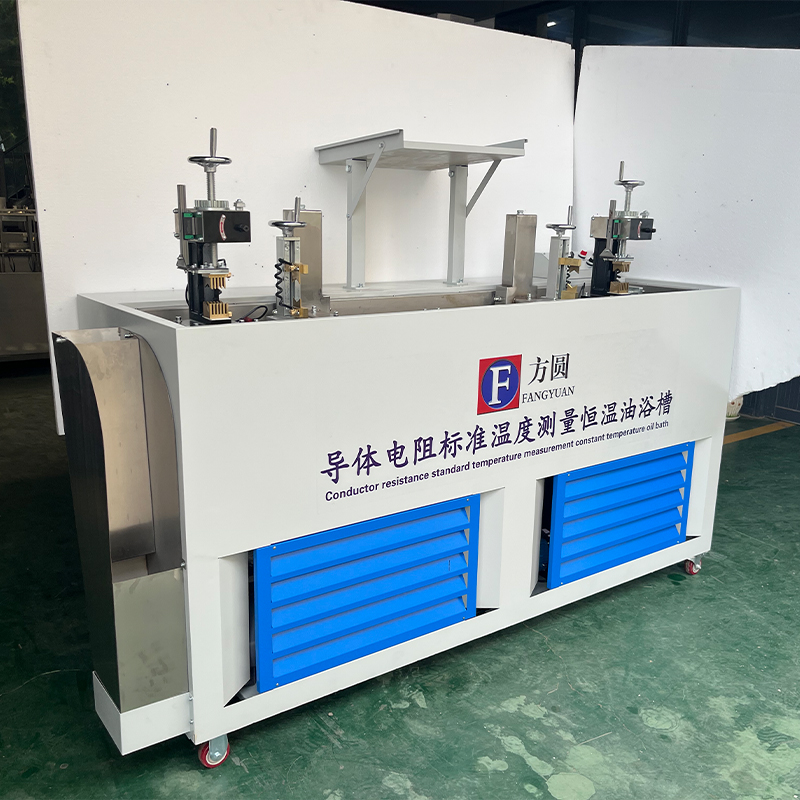a traditional tensile tester
A Traditional Tensile Tester An Overview
In the field of materials engineering and quality control, the tensile test is a fundamental method used to assess the mechanical properties of materials. This test is essential for determining how materials behave under tensile (pulling) forces and is crucial for a variety of applications, from construction to manufacturing. A traditional tensile tester plays a pivotal role in this evaluation, providing reliable and repeatable data on the strength and ductility of materials.
What is a Tensile Tester?
A tensile tester, also known as a universal testing machine (UTM), is an apparatus designed to apply a uniaxial force to a specimen, typically made from metals, plastics, or composites. The machine measures the material’s response to the applied force until it reaches its breaking point. Traditional tensile testers operate on a straightforward principle they grip both ends of a specimen and gradually pull them apart at a controlled rate, recording the stress and strain experienced by the material.
Key Components
A traditional tensile tester consists of several key components
1. Load Frame This is the primary structure of the tester, usually made from robust materials to withstand the forces applied during testing. The load frame houses the grips and the testing mechanism.
2. Grips These are essential for securely holding the specimen in place during the test. They must be designed to minimize slippage and distortion of the material.
3. Load Cell This sensor measures the amount of force being applied to the specimen. It provides real-time data that is crucial for calculating stress and analyzing material behavior.
4. Extensometer An extensometer is used to measure the elongation of the specimen during the test. This data is fundamental for calculating strain, which, along with stress, is used to derive material properties.
5. Control System Modern tensile testers may incorporate advanced digital controls and software for data acquisition and analysis. However, traditional machines often rely on manual operation and analog readouts.
a traditional tensile tester

Testing Procedure
The tensile testing procedure involves several steps
1. Preparation Samples must be prepared according to standardized dimensions and surface finishes to ensure consistency and accuracy.
2. Setup The specimen is mounted securely in the grips of the tensile tester. Care must be taken to align it properly to avoid uneven loading.
3. Testing The machine is programmed to pull the specimen at a specified rate of extension. The load cell and extensometer work together to continuously track and record the force and elongation.
4. Data Analysis Once the specimen fails, the data collected during the test is analyzed. Engineers typically produce stress-strain curves, from which they can extract critical material properties like yield strength, ultimate tensile strength, and elongation at break.
Applications
The applications of tensile testing are vast and varied. In construction, it ensures that materials like steel and concrete meet safety standards. In manufacturing, it helps in quality control processes by verifying that materials and components can withstand the stresses they will encounter in service. Additionally, research and development teams use tensile testing to innovate and improve materials for better performance and safety.
Conclusion
A traditional tensile tester remains an indispensable tool in the assessment of material properties. Despite advances in technology, the core principles of tensile testing have endured due to their effectiveness in procurement and quality assurance processes. As industries continue to evolve and materials science progresses, the importance of accurate tensile testing will only increase, ensuring that materials remain safe and reliable in an ever-demanding world.
-
Why the Conductor Resistance Constant Temperature Measurement Machine Redefines Precision
NewsJun.20,2025
-
Reliable Testing Starts Here: Why the High Insulation Resistance Measuring Instrument Is a Must-Have
NewsJun.20,2025
-
Flexible Cable Flexing Test Equipment: The Precision Standard for Cable Durability and Performance Testing
NewsJun.20,2025
-
Digital Measurement Projector: Precision Visualization for Modern Manufacturing
NewsJun.20,2025
-
Computer Control Electronic Tensile Tester: Precision and Power for the Modern Metal Industry
NewsJun.20,2025
-
Cable Spark Tester: Your Ultimate Insulation Assurance for Wire and Cable Testing
NewsJun.20,2025
 Copyright © 2025 Hebei Fangyuan Instrument & Equipment Co.,Ltd. All Rights Reserved. Sitemap | Privacy Policy
Copyright © 2025 Hebei Fangyuan Instrument & Equipment Co.,Ltd. All Rights Reserved. Sitemap | Privacy Policy
